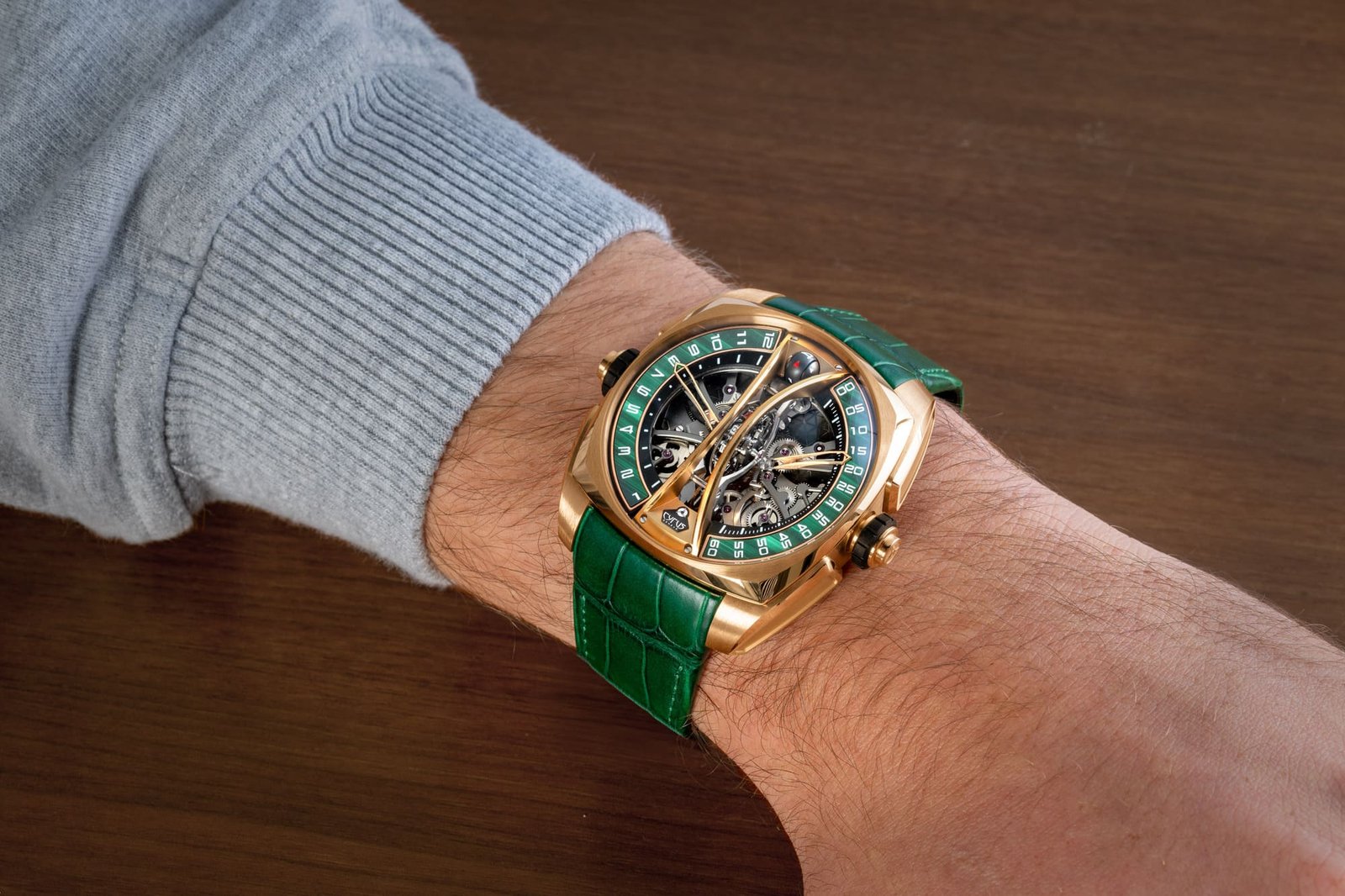Table of Contents
A ritual, more than a routine
Maintaining a mechanical watch on a daily basis means cultivating an art of living. Behind each tick, there are polished bridges, microscopic oils and a pendulum that beats like a discreet heart. Frequent travelers keep their watches under their sleeves when the rain comes, racing enthusiasts set their chronographs with deference, aesthetes rub the caseband like polishing a beautiful object. This guide distills the gestures that prolong the beauty and precision of a well-born mechanism – simple advice, inherited from workshops and wrists that know how to last.
Winding: the precise gesture that makes the difference
A mechanical watch, manual or automatic, likes regularity. In the morning, give him a quiet moment.
- Manual watch: 20 to 40 turns of the crown, slowly, to the point of resistance. No need to push beyond that. Ideally at a fixed time, to establish walking discipline.
- Automatic: if it has stopped, give the crown 20 to 30 turns before putting it on the wrist. Avoid “shaking” the watch: gentle winding preserves the return system and the rotor.
- Power reserve: don’t play tightrope. A partially reassembled mechanism can lose amplitude; Tightening it well ensures more stable walking.
This ritual is not trivial: it powers the barrels, stabilizes the rate and puts the watch in the best possible condition for the day.
Setting time and date: prohibited times
Watchmakers have a maxim: we respect the dater. Between approximately 8 p.m. and 3 a.m., the date change complication is engaged. Absolutely avoid correcting the date during this range, at the risk of tiring the mechanism.
- First set the time by moving the hands forward, never by forcing backwards if the brand advises against it.
- Change the date to the next day by scrolling the time if necessary, then adjust the quick date out of the risky range.
- “Hacking” seconds: for watches that offer it, pull the crown to the time setting position to stop the second hand and synchronize with the time signal.
Daily cleaning: cleanliness, readability, longevity
External maintenance is not cosmetic, it is mechanical in turn: dust and sand get everywhere. After the day, a microfiber cloth is enough for the case, back and glass.
- Steel/rubber case and bracelet: lukewarm water and neutral soap, soft brush (soft toothbrush type), careful rinsing, complete drying. Submerge only if waterproofing is validated.
- Leather strap: no water. Wipe dry, let breathe away from any heat source. Avoid perfume or cream directly on the leather, and alternate bracelets to prolong their life.
- Products to avoid: solvents, abrasive polishes, blowguns that are too powerful. Ultrasounds should be reserved for professionals.
Water and waterproofing: understanding the limits
Waterproofing is not forever; it depends on aging joints. Know the mention of your watch:
- 30 m: daily life, splashes only. No showering or swimming.
- 50 m: sink, heavy rain. Swimming remains not recommended.
- 100 m and more: swimming possible, according to the brand’s recommendations. Never handle the crown or pushers underwater (except specifically designed models).
Check that the crown is pushed in or screwed in properly before exposure to water. After the sea, rinse with fresh water. Avoid saunas and hammams: heat and expansion of materials compromise waterproofing. An annual leak test is the discreet ally of good maintenance.
Magnetization, shocks and temperature: the invisible enemies
Magnetization is the evil of the century: magnetic smartphone cases, bags with magnetic clasp, speakers, tablets. A watch that suddenly takes 1-3 minutes a day has often flirted with a magnet.
- Keep the watch away from these sources. Store it away from magnetic speakers and cases.
- A demagnetizer corrects the problem in a few seconds at the watchmaker; some general public tools exist, but going to a workshop remains safer.
- Shock: Most moves are shockproof, not dropproof. Avoid impact sports with a watch not intended for (boxing, active mountain biking). A sudden impact can offset the axis of the balance wheel or move a hand.
- Temperature: below 0°C or above 50°C, oils and materials suffer. Do not leave your watch in a car in direct sunlight.
Lubrication and overhaul: the right tempo
Lubrication is the silent soul of a caliber. Oils degrade over time, even if the watch is running. An interval of 3 to 7 years is generally recommended depending on the brand, use and waterproofing.
- Warning signs: decreasing power reserve, unusual variation in rate, abnormally noisy rotor, feeling of “sand” at the crown.
- Don’t: Open it yourself. Dust in an exhaust, precision is derailed.
- Do: Take the watch to a qualified watchmaker. A serious overhaul includes disassembly, cleaning, lubrication at prescribed points, replacement of gaskets, adjustment and leak testing.
A well-lubricated mechanism ages gracefully; poorly lubricated, it wears out silently. Scheduled maintenance is your best insurance.
Storage and rotation: the break that is good
How you let the watch sit affects how it runs. In the evening, place it in a safe place, away from magnetic fields, in a pouch or case. Silica gel packets help control humidity.
- Rest positions: dial up, crown up or down. Test: depending on the position, a few seconds per day can be gained or lost; learn the “night position” that compensates for your watch drift.
- Watch winder: useful for complex calendars and to avoid stopping if you alternate between several watches. Set the number of revolutions per day and the direction according to the caliber; don’t overdo it if the watch can just rest.
- Travel: Use a roll or hard pouch. Avoid the jacket pocket where the watch rubs against keys or magnetic cards.
The express mechanical maintenance checklist
- Go back up gently, at a fixed time, without forcing.
- Set the date outside the range 8 p.m.–3 a.m., move the time forward rather than backward.
- Wipe with a microfiber cloth; soapy water for steel/rubber, never for leather.
- Check the crown; rinse after the sea; no shower or sauna with the watch.
- Keep it away from magnets; consult for demagnetization if it suddenly gets ahead of itself.
- Protect it from shock and extreme temperatures.
- Schedule servicing and lubrication every 3 to 7 years depending on usage.
- Store it dry, test the rest position which refines its gait.
When it comes down to it, daily maintenance is just a conversation with your watch. A few attentions, sure gestures, and this mechanism – heir to the Breguet workshops like rally chronographs – will return it to you with a faithful presence on the wrist, day after day.






